







<
>
Harvesting machinery is essential in modern agriculture for efficiently gathering crops from the field, reducing labor requirements, and maximizing productivity. These machines are designed to harvest various types of crops, such as grains, fruits, vegetables, and oilseeds, with speed, precision, and minimal damage. Here are key aspects and functions of harvesting machinery:
Combine Harvesters: Combine harvesters, also known as combine harvesters or simply combines, are versatile machines used to harvest grains such as wheat, corn, and rice. Combines perform multiple functions in a single pass, including cutting the crop, separating the grain from the stalks, cleaning and sorting the grain, and depositing it into a storage tank or trailer. Combines feature cutting platforms, threshing mechanisms, sieves, and conveyors to accomplish these tasks efficiently.
Forage Harvesters: Forage harvesters, also called silage harvesters or choppers, are used to harvest crops such as corn, sorghum, and grasses for silage or animal feed. Forage harvesters chop the entire plant into small pieces, which are then collected and stored in silage pits or bales for feeding livestock. Forage harvesters typically feature cutting heads, chopping mechanisms, and blower systems to process and transport the harvested material.
Fruit Harvesters: Fruit harvesters are specialized machines designed for harvesting fruits such as apples, oranges, grapes, and berries. These machines are equipped with gentle handling mechanisms to prevent bruising and damage to delicate fruits. Fruit harvesters may use shaking, picking, or vacuuming methods to detach fruits from the tree or vine, followed by sorting and packing systems to prepare them for storage or market.
Vegetable Harvesters: Vegetable harvesters are used to harvest a wide range of vegetables, including carrots, potatoes, lettuce, and tomatoes. These machines are designed to minimize damage to the crop while maximizing efficiency and speed. Vegetable harvesters may use blades, diggers, or pickers to remove the vegetables from the ground or plants, followed by cleaning, sorting, and packaging systems to prepare them for sale or processing.
Cotton Harvesters: Cotton harvesters, also known as cotton pickers or strippers, are used to harvest cotton crops. These machines remove the cotton fibers from the plants' bolls, separating the lint from the seeds and other debris. Cotton harvesters feature picking mechanisms, cleaning systems, and storage bins to collect and transport the harvested cotton.
Grain and Seed Harvesters: Grain and seed harvesters are specialized machines designed to harvest crops such as soybeans, sunflowers, and peas. These machines cut the crop and separate the grains or seeds from the stalks, pods, or husks. Grain and seed harvesters may feature cutting heads, threshing mechanisms, and cleaning systems to process and collect the harvested material.
Overall, harvesting machinery plays a critical role in modern agriculture by enabling farmers to efficiently gather crops from the field, reducing labor costs, and maximizing productivity. As technology continues to advance, harvesting machinery will likely become more sophisticated, incorporating features such as GPS guidance, automation, and real-time monitoring to further enhance efficiency, precision, and sustainability in crop harvesting.
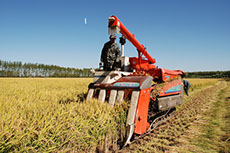
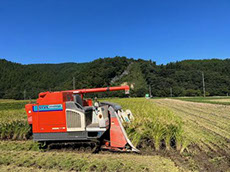
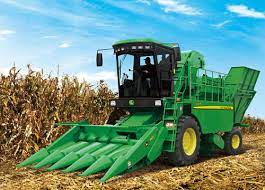
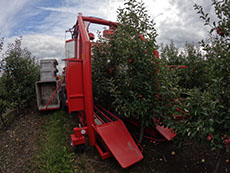
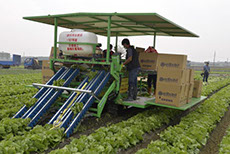
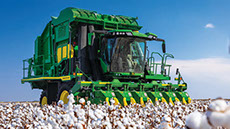
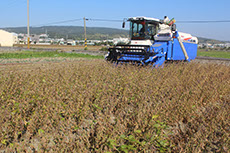
Information and picture sources:Internet search
URL: https://www.nongji1958.com/node/15338
http://www.yumishougeji.com/html/140140365.html https://weremczukagro.com/en/apple-harvester/
https://news.ltn.com.tw/news/life/breakingnews/2609974
https://news.ltn.com.tw/news/life/breakingnews/2609974
https://www.dadu.taichung.gov.tw/980667/980668/980670/980674/1929194/

Changhua County Ming Lun junior high school, Taiwan.
Ming Lun Junior High School 2024 Cyber Fair
